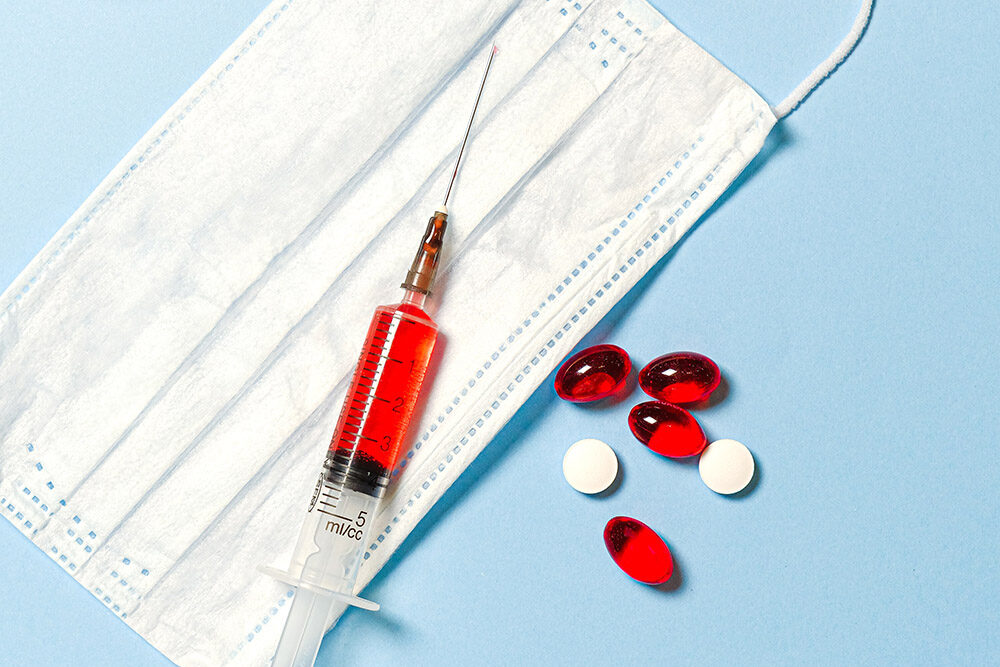Vaccine: Despite the undoubted progress of science and the theoretically almost unlimited possibility of synthesizing new drugs and vaccinations, the 21st century brings more and more new infections and reactivation of old, biological enemies. The build-up of drug resistance by bacteria and a small selection of antiviral chemotherapeutic agents poses new challenges to modern medicine. The answer to the attacks of new / old enemies during globalization seems to be an attempt to obtain population and individual resistance to the largest possible number of microorganisms. Immunity can be induced in humans through protective vaccinations.

What do vaccines and immunization programs give us?
- Immunization programs have eradicated or reduced health impacts from many deadly diseases. From tetanus and diphtheria to smallpox and Heine-Medina disease.
- Vaccinations offer an impressive reduction in child mortality. They allow for the marginalization of the problem of death of children, including measles, whooping cough and tetanus.
- Vaccinations reduce the effects of seasonal diseases (flu) and endemic diseases, e.g. tick-borne encephalitis.
- It is with great satisfaction that one can observe the processes of fighting for health not only in the “Western world”. The end of August 2020. is considered the time to overcome polio in Africa.
How do vaccines work?
Vaccines are products of biological origin capable of inducing the immunological processes necessary for the development of immunity, without causing toxic effects. Ideally should contain an antigen, the presence of which the body reacts to by building up permanent immunity without causing any harmful effects.
Vaccines deviate from this pattern: they often require booster doses (especially for diseases that are absent or eradicated in the population) and side effects of varying severity are observed.
The microbial antigens are the element stimulating the immune response. The presence of antigens determines the humoral (antibodies) and cellular (cytotoxic cells) immunity. Vaccination triggers immune processes and the synthesis of the so-called memory cells. Due to earlier inoculation, contact with the pathogen in the conditions of the everyday environment results in a quick response of the organism and overcoming the “known” danger during vaccination.
Delivery of the antigen in the vaccine is possible due to attenuation, i.e. inactivation of the pathogen. The vaccines used contain antigens in the form of:
Live microorganisms with modified properties (non-virulent strains) e.g. tuberculosis, measles, mumps, rubella
Dead, thermally or chemically inactivated microorganisms, e.g. influenza, rabies
Microbial surface antigens, inactivated toxins, e.g. whooping cough
Recombinant DNA products, e.g. HBs antigen in hepatitis B
In addition to antigens, the vaccine contains so-called adjuvants, preservatives and residual substances. All additives are tested and safe at the stated concentrations for human health.
Safety or why does it take so long to produce a new vaccine?
The demands placed manufacturers are extremely high. The new preparations must be characterized not only by high, long-term immunogenicity (the ability to generate an immune response), but also to meet safety standards and ultimately must be widely available.
Before the vaccine is delivered to the potential recipient, it undergoes a series of tests, usually many years. First, after the production, animal safety tests are carried out on the basis of the latest knowledge and scientific methods. After painstaking and thorough testing, the study of the effectiveness and safety of the vaccine in humans begins.
- Phase I clinical trials, conducted on a small group (usually less than one hundred) of volunteers, are designed to determine whether does not harm people.
- Phase II requires a larger group of volunteers (several hundred people). The phase is to find the optimal dose of the vaccine, determine whether it induces the desired effects (whether it is immunogenic) and constantly monitor safety.
- Phase III takes place with the participation of up to tens of thousands of volunteers. The study phase helps to determine if the vaccine prevents new diseases and to determine interactions with other by constantly monitoring side effects.
Clinical trials of a new require a lot of time and the participation of voluntary volunteers. The motivation of the people taking part in the study is most often to use the product, which is available to the public only about 2-3 years after the synthesis of a new vaccine. The introduction to the market does not complete the monitoring safety. Each adverse vaccine reaction is monitored, reported to scientific institutions and analyzed.
Reliable data on vaccinations and individual vaccines is best sought through medical consultations, on websites run by reliable scientific institutions or the Ministry of Health.
It is worth visiting the website of the National Institute of Public Health.
Literature:
1.Szczeklik, P. Gajewski, Interna Szczeklik
2.Jakub Gołąb, Immunology
3.National Institute of Public Health, Vaccinations Info, https://szczepienia.pzh.gov.pl/

